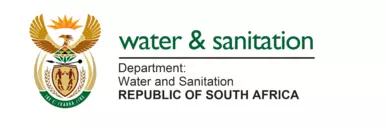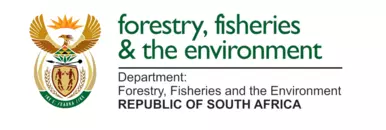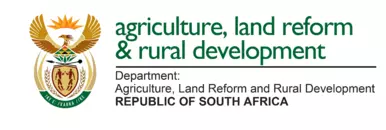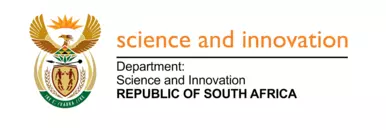The South African government is moving to exclude solar photovoltaic (PV) and battery storage facilities from the requirement to obtain environmental authorisation in areas where the environmental sensitivity is officially classified to be medium to low.
News
Govt moves to ease enviro path for solar and battery projects
The South African government is moving to exclude solar photovoltaic (PV) and battery storage facilities from the requirement to obtain environmental authorisation in areas where the environmental sensitivity is officially classified to be medium to low.
Forestry, Fisheries and the Environment Minister Barbara Creecy is seeking public comment on the plan, which is outlined in a Government Gazette notice, indicating that the exclusion has been proposed in terms of Section 24(2)(d) of the National Environmental Management Act, 1998 (Nema) and applies subject to compliance with a prescribed ‘norm’ developed in terms of 24(10) of Nema.
This ‘norm’ makes it possible to exclude the development and expansion of solar PV and battery facilities from environmental impact assessment regulations in areas of low or medium environmental sensitivity.
Such projects will be subject to a site-sensitivity verification and will also need to comply with a site-specific environmental management programme and a registration process.
The department has developed a Web-based screening tool to identify environmental sensitivities of a specific geographical location or site related to various identified environmental themes.
The proposed exclusion comes amid frequent and intense power cuts and an assessment hat South Africa needs to add about 6 000 MW of new generation capacity to close the supply/demand gap and create space for higher levels of maintenance of Eskom’s unreliable coal fleet.
It also follows a decision to termite a state of disaster declare in respect of the electricity crisis and to, instead, take actions using existing legislation and regulation.
“This is in line with the sector’s ongoing efforts to simplify the environmental legislative impact assessment framework for energy projects whilst ensuring that environmental protection is not compromised,” the department said in a statement, adding that the intention of the proposed exclusions is to improve the efficiency of the environmental assessment process.
“In addition, these exclusions intend to simplify the deployment of solar PV and battery storage facilities, to expedite the generation of electricity from renewable energy resources, facilitate the distribution of this generation capacity and contribute to addressing the existing electricity shortages currently being experienced by the country.”
The Gazette states that written comments should be made within 30 days of publication of on the notice, which is dated April 14.
he Department of Water and Sanitation (DWS), as custodian of water resources in South Africa, is in charge of managing and regulating the country's water resources and watercourses to ensure their conservation and protection.
Water Use Licence Application and General Authorisation: Application and registration requirements for water uses in terms of Section 21 (c) and (i) of the National Water Act. 1998 (Act No. 3
(Virtual Showroom): The Department of Water and Sanitation (DWS), as custodian of water resources in South Africa, is in charge of managing and regulating the country's water resources and watercourses to ensure their conservation and protection. In its efforts to promote the efficient and sustainable utilisation of water resources, the Department is committed to ensuring that water is used wisely and managed sustainably. As part of this responsibility, DWS has established legislation requiring the submission of Water Use Licence Application (WULA) or General Authorisation(GA) registration applications to licence or register water use related activities.
All activities that impede, divert the flow of a watercourse or alter the bed, banks, course or characteristics of a watercourse requires licencing or registration by DWS in terms of Section 21(c) and (i) of the National Water Act, 1998 (Act No. 36 of 1998), as amended (NWA), or the Government Notice (GN 509 of 2016) (depending on the risk the activity poses on the watercourse). Water use licencing is a regulatory mechanism used to manage water resources and to ensure its use is undertaken in a responsible and sustainable manner.
The legal procedural requirements for the WULA are set out in the Regulations regarding the Procedural Requirements for Water Use Licence Applications and Appeals, published in GN R267 in Government Gazette 40713 of 24 March 2017.
During the initial phase of the application or registration process, a detailed description of the proposed use of the water should be provided, including the type and description of the activity, the relevant industry sector, the distance to the nearest watercourse, and the number of people who will benefit from the acquisition of a licence or registration. This information is submitted to the relevant regional office, whereupon a pre-application meeting will be held with the water user, the DWS, and the consultant facilitating the application or registration process. During this stage, it will be beneficial to have, by this stage, undertaken the risk assessment by a specialist in the field as required by GN 509 of 2016. One of the aims of the risk assessment is to determine if the activity proposed to be undertaken will result in a low, medium, or high impact on watercourses and thereby determine if a water use licence or registration process needs to proceed to licence or register the water uses in terms of Section 21(c) and (i) of the NWA.
It is important that all requirements and information necessary to properly process the application needs to be provided to ensure the application and/ or registration application will be processed. It should be noted that requirements may differ depending on the type of project or industry sector. In addition, the respective regional office of the DWS may also prescribe additional requirements that may need to be complied with.
Generally, the typical licencing and registration requirements for Section 21 (c) and (i) water use activities for the GA Registration and WULA include the following:
- Geographical location of the water use activities.
- Identity Document (ID) copy of the applicant.
- Company registration certificate.
- The property title deeds.
- A consultant appointment letter or power of attorney.
- Risk assessment in terms of GN 509 of 2016.
- Water Use Summary Report and Motivational Report to address Section 27 of the NWA
Should the water use activities be required to be licenced by means of a WULA, the following additional information will be required to be submitted:
- Master layout map and site plans.
- Landowner consent letters (if the water user is not the property owner)
- Wetland delineation report.
- Rehabilitation Plan.
- Method Statement.
- Storm Water Management Plan.
- Hydrological Study and Floodline Delineation.
- Design report and drawings (all drawings and reports must be signed by the professional engineer, and the registration number must also be reflected on the report and drawings).
- Landscape Maintenance Plan.
- Plant Species Plan (A1 paper).
- Monitoring Programme and Auditing Plan.
- Water Use Summary Report.
- Water Use Technical Report.
- Public Participation Report (capturing comments and responses during the sixty-day public participation process).
The DWS has announced for 2020 that the decision making timeframes to grant or decline a Water Use Licence have been reduced from 300 days to 90 days.
As a result of the shortened review and decision making timeframes, it is essential to ensure that the final application submitted to DWS is of a sufficient and adequate technical quality as well as contain all the necessary information to avoid a potential rejection.
By being aware of the information requirements, the environmental assessment practitioner facilitating the process on behalf of the applicant can ensure steps are taken to allow for effective planning of resources during the initial phases of a potential project, thereby avoiding application rejection, delays, and financial constraints that could have been avoided with good planning at the earliest stages of a project.
ENVASS is in the position to assist clients with the facilitation of all WULA or GA registration applications.
To get more energy generation capacity on line quicker, the Department of Forestry, Fisheries and the Environment (DFFE) will implement exemptions from environmental-impact assessment (EIA) requirements for certain energy projects.
Creecy announces EIA exemption for solar PV projects in low-, medium-risk areas
To get more energy generation capacity on line quicker, the Department of Forestry, Fisheries and the Environment (DFFE) will implement exemptions from environmental-impact assessment (EIA) requirements for certain energy projects.
The department has earmarked solar photovoltaic (PV) power generation and certain transmission infrastructure for these exemptions, as it typically poses little risk to the surrounding environment.
Forestry, Fisheries and the Environment Minister Barbara Creecy in a July 21 briefing conceded that the EIA approval process used to take up to 300 days, and, even with the department implementing various efficiencies, that has only reduced down to an average 176 days currently, which is still excessive and poses an impediment to projects reaching closure.
Some of the department’s initiatives have included identifying and gazetting 11 Renewable Energy Development Zones, five electricity transmission corridors and gas corridors, in which the environmental authorisation timeframes have been halved.
Still, the DFFE deemed it necessary and helpful in resolving the country’s energy crisis to include exclusions from the need to obtain an environmental authorisation – in low and medium sensitivity areas, as classified by the department’s Web-based screening tool.
The screening tool identifies areas of very high, high, medium and low environmental sensitivity for a number of environmental themes; the Minister intends to adopt the screening tool as an environmental management instrument.
The notices in this regard will be gazetted for public comment in August.
Creecy believes this intervention will speed up the environmental approval element for solar PV projects to within 60 days and, thereby, simplify the deployment of solar PV facilities.
The exempted projects will, however, still be subject to a registration process to allow for compliance monitoring.
The DFFE explains that, although no public participation process will be applicable to these projects, as no environmental authorisation is required, notification of the registrations will be gazetted to enable access to the registration decisions and to facilitate the possibility to submit appeals should a person wish to do so.
The DFFE will confirm what information will be required for registration soon, but it will include a biodiversity and plant specialist or environmental assessment practitioner (EAP) visiting the site, as well as developers using the department’s screening tool to generate a report on the project area in question.
The EAP will prepare a site sensitivity verification report to ensure compliance with the allowable development limits.
The DFFE has begun work on preparing a generic environmental management programme for solar PV projects in low or medium environmental sensitivity areas.
Creecy confirmed that further work would be undertaken to consider ways of simplifying the EIA process for wind energy projects, without compromising the protection of birds and bats.
During the State of the Nation Address on February 22, 2023, South African President Cyril Ramaphosa announced that the government has declared a national state of disaster to address the electricity crisis and its effects. This move comes as Eskom....
National State of Disaster Declared to Combat South Africa's Electricity Woes
The South African government on Wednesday terminated the national state of disaster it declared two months ago to deal with an electricity crisis, although there are no signs that the power problems are ending.
The government ended the state of disaster while Africa's most developed economy still wrestles with nationwide rolling blackouts — currently for six hours a day — due to failures at the state-run power company, Eskom.
Analysts have this week warned that Eskom's own forecasts indicate that South Africa's businesses and its 60 million people will experience electricity cuts for at least another year.
The national state of disaster was announced by South African President Cyril Ramaphosa during his State of The Nation address on Feb. 9. It would allow the government to exempt essential services like hospitals and water treatment plants from power blackouts and free up public money to purchase additional power from neighboring countries on an emergency basis, Ramaphosa said.
Ramaphosa has also since appointed a new cabinet minister whose sole responsiblity is to deal with the electricity crisis.
The government said in a statement Wednesday that the state of disaster had been “a necessary response” to “critical” levels of power cuts at the time it was issued.
The frequency of the blackouts has only eased slightly from up to 10 hours a day in February. The blackouts are usually applied in two-hour blocks before the electricty is switched back on for a period.
South Africa has also issued state of disaster declarations recently in response to the COVID-19 pandemic and flooding.
The electricity problems have been blamed on years of mismanagement and corruption at Eskom, which is struggling to keep its aging coal-fired plants running. Eskom has been unable to provide a constant supply of electricity and relied on blackouts to save power for years but the cuts in 2022 were the worst the country has experienced.
They were a key contributor to South Africa's economy shrinking by 1.3% in the fourth quarter of last year, economists said, raising fears that the country is on the brink of a recession.
The National Energy Crisis Committee (NECOM) has today, 21 January 2023, released a six-month progress update on implementation of the Energy Action Plan...
National Energy Crisis Committee releases six-month progress update on implementation of the energy action plan
The National Energy Crisis Committee (NECOM) has today, 21 January 2023, released a six-month progress update on implementation of the Energy Action Plan.
This update follows a period of load shedding which was escalated to stage 6 due to a high number of breakdowns across Eskom’s generation fleet.
The declining Energy Availability Factor of Eskom’s fleet reflects the cumulative impact of historical underinvestment in maintenance and assets, exacerbated by flaws in the design of new power stations in the last decade.
To respond to the severe impact of load shedding on households, small businesses and the economy as a whole, President Cyril Ramaphosa announced a range of measures in July 2022 to improve the performance of existing power stations and add new generation capacity as quickly as possible.
The Energy Action Plan was developed through extensive consultation and endorsed by energy experts as providing the best and fastest path towards energy security.
The NECOM has since been established to coordinate government’s response and ensure swift implementation of the plan.
During the past week, the President has convened the NECOM in order to accelerate government’s efforts to reduce load shedding. He has also engaged with a wide range of stakeholders, including political parties, labour unions, business associations, community groups, interfaith leaders, traditional leaders, premiers and mayors to ensure a collective response to this national challenge.
The progress update released today outlines important steps that have been taken to follow through on the commitments announced by the President.
These include:
- Schedule 2 of the Electricity Regulation Act has been amended to remove the licensing requirement for generation projects, which will significantly accelerate private investment.
- Since the licensing threshold was first raised to 100 MW, the pipeline of private sector projects has grown to more than 100 projects with over 9000 MW of capacity. The first of these large-scale projects are expected to connect to the grid by the end of this year.
- The NECOM has instructed departments to cut red tape and streamline regulatory processes for energy projects, including reducing the timeframe for environmental authorisations to 57 days from over 100 days previously; reducing the registration process from four months to three weeks; and ensuring that grid connection approvals are provided within six months.
- Project agreements for 19 projects from Bid Window 5 and six projects from Bid Window 6 of the renewable energy programme, representing 2800 MW of new capacity. These projects will soon proceed to construction.
- A new Ministerial determination has been published for 14771 MW of new generation capacity from wind, solar and battery storage to accelerate further bid windows.
- An additional 300 MW has been imported through the Southern African Power Pool, and negotiations are underway to secure a potential 1000 MW from neighbouring countries starting this year.
- Eskom has developed and launched a programme to purchase power from companies with available generation capacity through a standard offer. The first contracts are expected to be signed in the coming weeks.
- A team of independent experts has been established to work closely with Eskom to diagnose the problems at poorly performing power stations and take action to improve plant performance.
Six power stations have been identified for particular focus over the coming months through a comprehensive Generation Recovery Plan, with oversight from the new Eskom board.
While the power system remains constrained in the short term, these measures will reduce the frequency and severity of load shedding as new capacity is brought online.
President Ramaphosa said: “South Africans are right to demand immediate action to address the devastating impact of load shedding on our lives and on the economy.
“The Energy Action Plan provides a clear way out of this crisis. We do not need any new plans – we are focusing on implementing this plan fully and effectively to achieve energy security for all South Africans.”
The President has further instructed law enforcement agencies to ramp up efforts to protect electricity infrastructure.
A special meeting of the National Security Council will be convened in the next week to receive a report on operations underway to disrupt criminal syndicates and address theft and sabotage at several power stations.
Addressing the ongoing shortfall in electricity remains government’s single most important priority.
Further updates will be provided on a regular basis regarding progress in implementing the Energy Action Plan.
The full update can be accessed at http://bit.ly/3D4243A
Media enquiries: Vincent Magwenya, Spokesperson to the President – 082 835 6315
Issued by: The Presidency Pretoria









